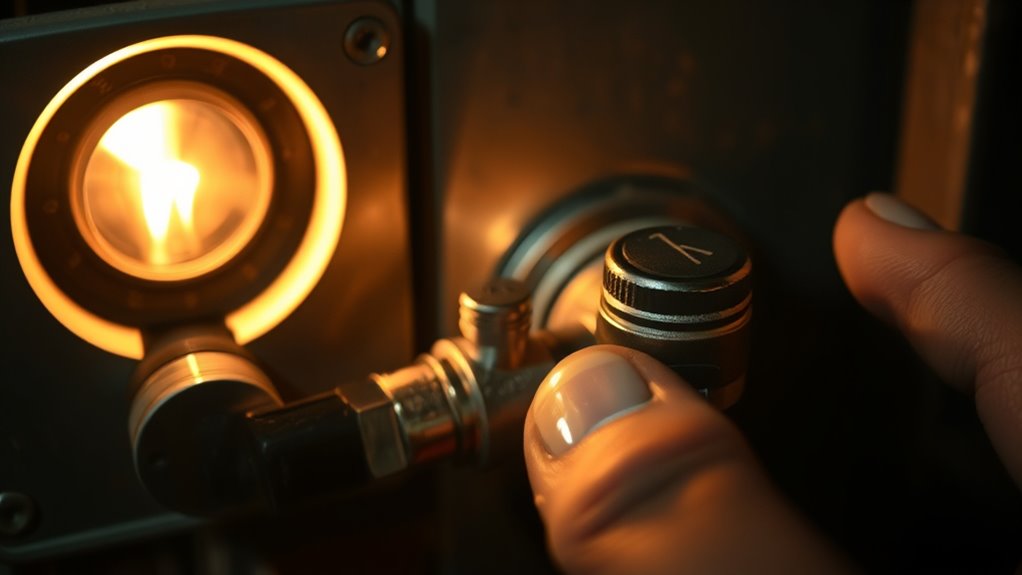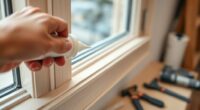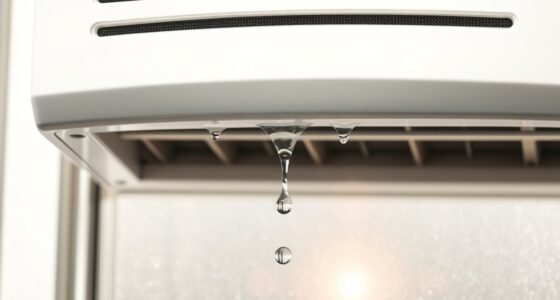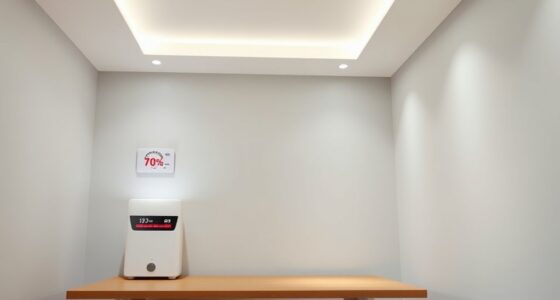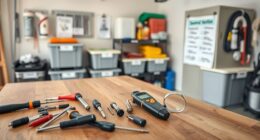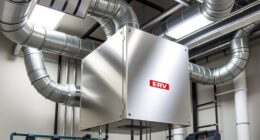If your pilot light keeps going out, start by turning off the gas supply and inspecting the pilot assembly for dirt or soot. Clean the pilot orifice with a soft brush or compressed air, and check the thermocouple’s alignment. Make certain gas lines are free of leaks and the gas valve is fully open. If these steps don’t solve the issue, you may need to check the control valve or consider professional assistance. Further tips can help you resolve the problem safely.
Key Takeaways
- Turn off the gas supply and furnace before inspecting or cleaning the pilot assembly to ensure safety.
- Check and clean the pilot orifice for dirt, dust, or soot that may obstruct gas flow.
- Ensure the thermocouple is properly aligned, clean, and undamaged to maintain pilot flame stability.
- Verify that gas lines are leak-free and the gas valve remains fully open; contact professionals for gas pressure issues.
- Test the control valve for proper operation and replace it if malfunctioning, avoiding DIY repairs on gas components.

A malfunctioning pilot light can prevent your heating system from working properly, but troubleshooting it is often straightforward. When your pilot light keeps going out, it’s crucial to address the issue promptly to ensure your home stays warm and safe. Before diving into any fixes, remember that furnace maintenance and gas safety are critical. Handling gas-related components improperly can be dangerous, so if you’re unsure, it’s best to call a professional.
Start by turning off the gas supply and the furnace to prevent any leaks or accidents. Once the system is safely shut down, inspect the pilot light assembly. Over time, dirt, dust, or soot can clog the pilot orifice, causing the flame to go out. Gently clean the area with a soft brush or compressed air, making sure to remove any debris that could block the gas flow. If you notice corrosion or damage around the pilot assembly, replacing worn parts is often necessary for reliable operation.
Turn off gas and furnace, then inspect and clean the pilot assembly to prevent outages.
Next, check the thermocouple, which acts as a safety device that shuts off the gas if the pilot light goes out. A faulty thermocouple can cause the pilot to repeatedly extinguish. To test it, see if it’s properly aligned with the flame; if it’s bent or dirty, realign or clean it carefully. If cleaning doesn’t fix the problem, replacing the thermocouple is usually a simple and inexpensive process. Remember, a well-maintained thermocouple is essential for gas safety and proper furnace operation.
Another common cause for pilot light issues is a weak or irregular gas supply. If your gas pressure is too low, the pilot may keep extinguishing. Check for any leaks in the gas lines or a closed gas valve. If you suspect a supply problem, don’t attempt to fix it yourself—call your gas provider or a professional technician. They can safely check the pressure and ensure everything is functioning correctly.
Finally, verify that the control valve is functioning properly. A faulty control valve can prevent gas from reaching the pilot light, causing it to go out repeatedly. If all other components seem in order but the problem persists, replacing the control valve might be necessary. Always prioritize gas safety and never attempt to repair gas valves unless you’re qualified.
Frequently Asked Questions
Can a Pilot Light Issue Cause Gas Leaks?
Yes, a pilot light issue can cause a gas leak if it’s not operating properly. When the pilot light keeps going out, gas may continue to flow, increasing the risk of leaks. If you notice a strong gas smell or suspect a leak, turn off the gas supply immediately and call a professional. Addressing pilot light problems promptly helps prevent dangerous gas leaks and ensures your safety.
How Often Should I Check My Pilot Light?
You should check your pilot light at least once a month to make certain it’s functioning properly. Incorporate this into your regular inspection schedule and follow maintenance tips like cleaning the pilot area and checking for gas leaks. If you notice any irregularities, such as the flame flickering or going out frequently, it’s best to call a professional. Regular checks help prevent safety hazards and keep your appliance running efficiently.
Is It Safe to Relight the Pilot Light Myself?
Relighting your pilot light is definitely doable, but it’s not a task to take lightly—think of it as taming a wild beast! For DIY safety, always turn off the gas and wait for it to dissipate, then carefully follow the manufacturer’s instructions. Use proper gas detection tools and ensure proper ventilation. If you’re unsure or uncomfortable, it’s safest to contact a professional—better safe than risking a gas leak or fire.
What Long-Term Problems Cause Pilot Lights to Go Out?
Long-term problems that cause pilot lights to go out often include ventilation issues and inconsistent gas pressure. Poor ventilation can lead to gas buildup or insufficient airflow, making it hard for the pilot to stay lit. Similarly, fluctuating gas pressure can prevent a steady flame, causing it to extinguish. Regular inspections of your ventilation system and gas supply are vital to prevent these issues and keep your pilot light reliably lit.
When Should I Call a Professional for Pilot Light Issues?
You should call a professional immediately if your pilot light keeps going out despite your attempts at DIY repairs. Ignoring the issue can lead to dangerous gas leaks or appliance damage. Sudden, persistent problems signal a serious safety concern that needs expert appliance maintenance. Don’t risk your safety—trust a technician to diagnose and fix the root cause, ensuring your home stays safe and your appliance operates correctly.
Conclusion
When your pilot light keeps flickering out, imagine it as a tiny lighthouse struggling against the dark, its flame flickering like a heartbeat. By carefully checking for drafts, ensuring proper gas flow, and cleaning the pilot assembly, you’re tending to this delicate beacon. With patience and a steady hand, you’ll revive its steady glow, restoring warmth and safety to your home. Remember, sometimes the smallest adjustments make the biggest difference in keeping your light shining bright.
